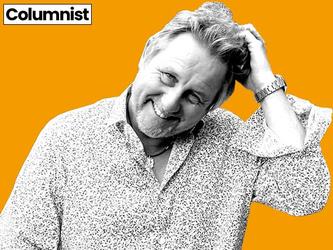Keeping up with the Joneses, not the Kardashians
In this post-pandemic era, the power centre of influence may have undergone a seismic shift. With so much working from home and home-schooling, plus limited leisure and travel in the past 18 months, our local communities have emerged far stronger, as people have not only got to know each other, but also relied on each other. Trust, closeness and communality have grown to mesh society together; they are key building blocks for driving social change.
Community-driven behaviour change such as this adds to existing knowledge of the science of behavioural change. Behavioural science has often suggested that it is authority figures – ‘messengers’ such as society’s elites, role models, experts and leaders – who tend to do the heavy lifting when it comes to influencing behaviour.
Robert Cialdini, author of the bestselling book Influence, includes the authority effect as one of his six universal principles of persuasion – and many behaviour change campaigns have been centred on this assumption, the most recent being President Biden’s initiative to counter vaccine hesitancy by calling on TikTok, Twitch and YouTube influencers to spread the word. The rise of social media has also popularised the idea that people can be influenced heavily by celebrity influencers and experts. Yet the pandemic has led many to reject, or be sceptical about, messages from leaders and experts, and may have weakened this impact.
Behavioural science acknowledges that generally knowing what other people ‘like us’ are doing will encourage us to conform, to do what they are doing. It’s a concept known as descriptive social norms. Yet this only tends to be effective once the majority has already adopted a behaviour. Think of those now-ubiquitous comms telling you that four in five people have bought this, or travelled here, or paid for that.
In the early days of society starting to adopt a new, complex behaviour, however, the main influences may well be community-driven – not just people ‘like’ us, but people near us, known to us. Behaviours such as driving an electric car, eating less meat, eating a healthy diet, breastfeeding, or doing more exercise.
Social media losing influence
In recent years, people have been faithful to the belief that social media has been a big driver of change via influencers – remote individuals we might look up to, but have never actually met – as well as memes and posts going viral. This is based on the idea that people with a wide reach, a huge number of connections and who span multiple peer groups will have the greatest influence. In fact, recent findings on social media show that well-connected people with many contacts, whose reach spans multiple groups, are often not the most influential for spreading political messages and controversial news.
Rather, communication professor Damon Centola believes the real persuasion for more sticky behaviour change is driven and reinforced by multiple exposures with close peers with whom we interact regularly, such as family, friends, colleagues and neighbours, because they are similar to us and we trust them.
At a macro level, this means that, initially, there is cluster-based behavioural change, as, one by one, different peer groups adopt a new behaviour. A locally critical mass of people feed off each other’s emotional energy and change their behaviour, and as that becomes visible to other groups, the behaviour spreads there, too. Although it may spread more slowly than a chunk of information going viral, it typically has a much more lasting impact.
Local neigbourhoods act as drivers of change
While word of mouth (chatting with close ties in our community) is likely to be an important factor, at an even more basic level, simply seeing behaviour change in our community seems to be significant, a concept known as spatial peer effects.
For example, a recent study using machine learning found that the main driver for the uptake of solar panels in Fresno, California, was being within 200m of another house with solar panels. Solar panels show up in geographical clusters on maps. The theory is, if our neighbours get solar panels, we see them, we might chat to them about their experience, and then we go and install our own. This supports previous research in Switzerland, Germany, and elsewhere in the US. Indeed, research in Switzerland found that visibility was a critical driver – the more visible the panels were, the more likely others would be to install them, too.
Local neighbourhoods may not be the only drivers of change for certain behaviours, such as electric vehicle purchases. A report by the National Center for Sustainable Transportation recently found not only neighbourhood-based patterns of adoption for plug-in electric vehicles, but workplace ones, too. Specifically, exposure to an electric vehicle (EV) within a one-mile radius was associated with a 0.2% increase in EV sales. This was in a context where plug-in EV sales made up only 7.8% of new car sales, meaning EVs were relatively uncommon on Californian highways. Exposure to plug-in EVs was also associated with fewer hybrid vehicles, presumably as people prefer to choose a plug-in EV over a hybrid. This effect may also be influencing the UK market; by the end of 2020, electric vehicles made up more than 10% of all vehicle sales in the UK, which means they are becoming ever more visible in neighbourhoods.
Case studies of lower-tier Chinese cities (second-tier Hangzhou and third-tier Linyi) have also found that peer and neighbourhood influences, as well as a willingness to adopt new innovations, are significant factors driving EV adoption there.
Implications for research
- Researchers can explore clusters of peer groups to better understand forces of influence, such as which peers in a group are most influential and why, and how many exposures to new peer behaviours it takes for change to occur. How many times does someone have to come across a close contact adopting a new behaviour to make them adopt it too?
- What is the main driver in peer exposure? Is it simply that people see or hear of their peers adopting a new behaviour, or does it involve word-of-mouth type conversations with peers about their change in behaviour?
- If a behaviour change is visible, such as rooftop solar panel installation, researchers can conduct simple observational analysis to analyse possible cluster effects in the home, the workplace or other locations where people cluster together frequently.
- These peer effects suggest that while top-down influencers and authority figures may be good at spreading simple chunks of information and ideas, they may not be the most effective for shifting complex behaviours such as sustainable travel or getting children vaccinated. Local influencers – people at grassroots levels who are well integrated into communities and peer groups – could well have a more significant and sustainable impact.

We hope you enjoyed this article.
Research Live is published by MRS.
The Market Research Society (MRS) exists to promote and protect the research sector, showcasing how research delivers impact for businesses and government.
Members of MRS enjoy many benefits including tailoured policy guidance, discounts on training and conferences, and access to member-only content.
For example, there's an archive of winning case studies from over a decade of MRS Awards.
Find out more about the benefits of joining MRS here.














0 Comments